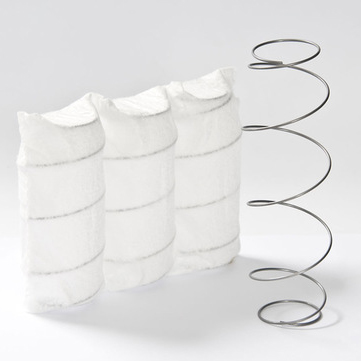When it comes to the all-round responsibility of the textile industry, it should be non-woven fabrics. Non-woven fabric, scientific name non-woven fabric, as the name implies, is a fabric formed without spinning and weaving, but by orienting or randomly arranging short fibers or filaments to form a web structure, and then using needle-punched spunlace hot air , thermal bonding or chemical reinforcement.
The uses of non-woven fabrics are extremely extensive. We can see traces of non-woven fabrics everywhere. Let us explore where non-woven fabrics exist in our lives~
Garment Industry
In the field of clothing, non-woven fabrics are mainly used in villages, adhesive linings, flakes, shaped cotton, disposable underwear, various synthetic leather base fabrics, etc. Especially durable products such as village cloth and batting materials consume the largest amount of non-woven fabrics.
Medical industry
With the sudden epidemic, people all over the country are familiar with the professional terms such as spunbond non-woven fabrics and spunlace non-woven fabrics. Non-woven fabrics are active in the medical and protective fields. It is not only convenient to use, safe and hygienic, but also effective in preventing bacterial and iatrogenic cross-infection. It can be used to produce masks, surgical caps, disposable surgical gowns, disposable medical sheets, maternity Bags, etc., as well as for the production of diapers, sterilization wraps, facial masks, wet wipes, sanitary napkins, sanitary pads and disposable sanitary cloths, etc.
industry
Including roofing waterproofing membrane and base material of asphalt shingle, reinforcing material, polishing material, filter material, insulating material, cement packaging bag, Shigong cloth, covering cloth, etc. For example, in the process of engineering construction, in order to prevent dust and other material particles from flying and hurting the human respiratory tract and polluting the environment, non-woven materials are generally used for outsourcing. Moreover, non-woven fabrics are indispensable in batteries, air conditioners, and filters.
agriculture
Because non-woven fabrics are easy to manage, lighter in weight and better in thermal insulation, they are very suitable for crop protection fabrics, seedling raising fabrics, irrigation fabrics, thermal insulation curtains, etc. In addition, non-woven fabrics are also widely used in seedling shading and cultivation. Compared with plastic films, non-woven fabrics have better water permeability and ventilation effects. The rational use of non-woven fabrics with superior performance can help people to achieve high-quality, high-yield, stable yield, pollution-free and pollution-free planting of crops.
We can often find non-woven fabrics in daily life, such as disposable tablecloths, mop cloths, wipes and other kitchen necessities; wallpaper, carpets, thermal insulation materials and other housing products; dust bags, handbags, gift packaging bags and other packaging; travel compressed towels, disposable orders, tea bags, and more.
Post time: Sep-22-2022








